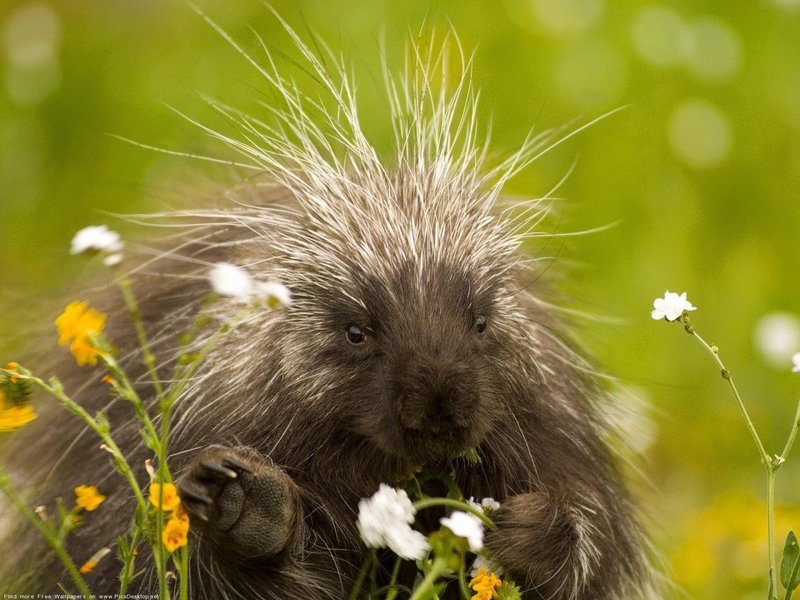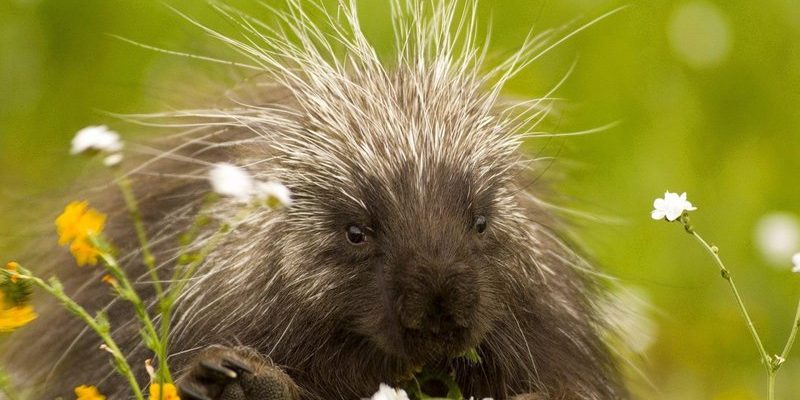
You might be wondering what makes porcupines such enduring animals. Well, like a well-crafted puzzle, they fit perfectly into their ecosystems by using a mix of clever adaptations and survival strategies. From their diet to their shelter, every piece plays a role in their survival puzzle. So, grab a comfy seat, and let’s dive into the world of porcupines and explore how they navigate the ups and downs of life in the wild.
Unique Adaptations of Porcupines
Porcupines are packed with unique adaptations that help them survive. Their most famous feature, the quills, is a fantastic defensive tool against predators. These quills are sharp, barbed, and can easily detach if a predator gets too close. Imagine they’re like nature’s version of a well-armed fortress. When threatened, a porcupine can effectively turn its back and let its defenses do the work.
But it doesn’t stop there. Porcupines are also great climbers. They often take to the trees, using their strong limbs and sharp claws. This gives them an edge over ground-based threats and helps them access food sources. Think of it as their version of having a penthouse suite, where they can dine on juicy leaves, fruits, and even tree bark—treats that many other animals can’t reach.
They also have a slow metabolism, which allows them to survive on a relatively low-calorie diet. This means they don’t have to forage as frequently as other animals. In environments where food might be scarce, this slow-and-steady approach is a smart strategy. It’s as if they’re on a different kind of budget, making every bite count.
Diet: A Key to Survival
What do porcupines eat? Well, their diet is quite fascinating and plays a vital role in their survival. They are herbivores, mostly munching on leaves, fruits, and bark. You might be surprised to learn they can even consume the tough bark of trees, which many animals find inedible.
Porcupines are not picky eaters, which works in their favor. They’ll often eat whatever is available in their environment. This adaptability allows them to thrive in areas where seasonal changes make food sources unpredictable. So, if one type of food is scarce, they’ll simply switch to another.
During winter, when most vegetation is covered in snow, porcupines can rely on their ability to climb trees for food. They’ll snack on bark and even the buds of branches, showcasing their resourcefulness. They’re like nature’s food processors, finding a way to make use of what’s around them, even when times are tough.
Shelter and Habitat Choices
When it comes to finding shelter, porcupines are choosy yet adaptable. They enjoy living in forests, where they can find plenty of food and trees to climb. You might find them nesting in trees, under rock outcroppings, or even in abandoned burrows made by other animals. Their choice of habitat provides them with safety from predators and easy access to food.
Porcupines are often solitary creatures, which means they can be selective about their living space. This can be an advantage in harsh environments, where resources are limited. They don’t have to compete with others for food or shelter, making their survival chances even better.
In colder climates, porcupines have a thick layer of fat under their skin, which keeps them warm. This insulation, combined with their choice of dens that can retain heat, helps them weather chilly nights and harsh winters. Think of it as their own little cozy, heated apartment in the wild.
Defense Mechanisms Beyond Quills
While their quills are the most well-known defense strategy, porcupines have a few other tricks up their sleeves. For instance, when threatened, they often make loud hissing noises and stomp their feet. This can startle predators and signal that they’re not easy prey.
Interestingly, porcupines also have a unique social behavior when it comes to defending against threats. They may group together, using their combined quill defenses to ward off attackers. Just imagine a team of porcupines, backs turned together, ready to face whatever comes their way.
If all else fails, porcupines also have the ability to remain very still and quiet, blending into their surroundings. Their fur has a mottled pattern that can help them camouflage among the trees and forest floor. It’s like playing hide and seek, but they excel at staying unseen, thanks to their natural camouflage.
Breeding and Growing Up in Tough Environments
Breeding is another important aspect of how porcupines survive. They breed once a year, typically in the fall, and after a gestation period of about seven months, a single baby porcupine, called a porcupette, is born. Unlike many mammals, porcupettes are fairly independent from birth, and they quickly learn to navigate their environment.
This early independence is crucial for survival in harsh environments. As soon as they’re able, porcupettes start exploring the world around them, feeding on easy-to-reach leaves and familiarizing themselves with potential threats. Their ability to adapt quickly is essential in finding food and shelter.
Mother porcupines care for their young for several months, teaching them the skills needed to survive. This mentorship is invaluable, as it helps the baby porcupines learn how to find food, climb, and defend themselves. The lessons learned during these early months can make a big difference later in life, helping them thrive in the wild.
In conclusion, porcupines are remarkable survivors in harsh environments. Their unique adaptations, varied diet, clever choices in habitat, and effective defense mechanisms all play a role in their resilience. Whether it’s their ability to climb trees for food or their quills that ward off predators, each aspect contributes to their success in the wild.
So, the next time you think of a porcupine, remember that they’re more than just spiky creatures. They are incredible survivors with fascinating stories of adaptation and resilience. In a world that can sometimes be harsh, porcupines remind us of the beauty of nature’s clever designs and the importance of resilience in the face of challenges.

